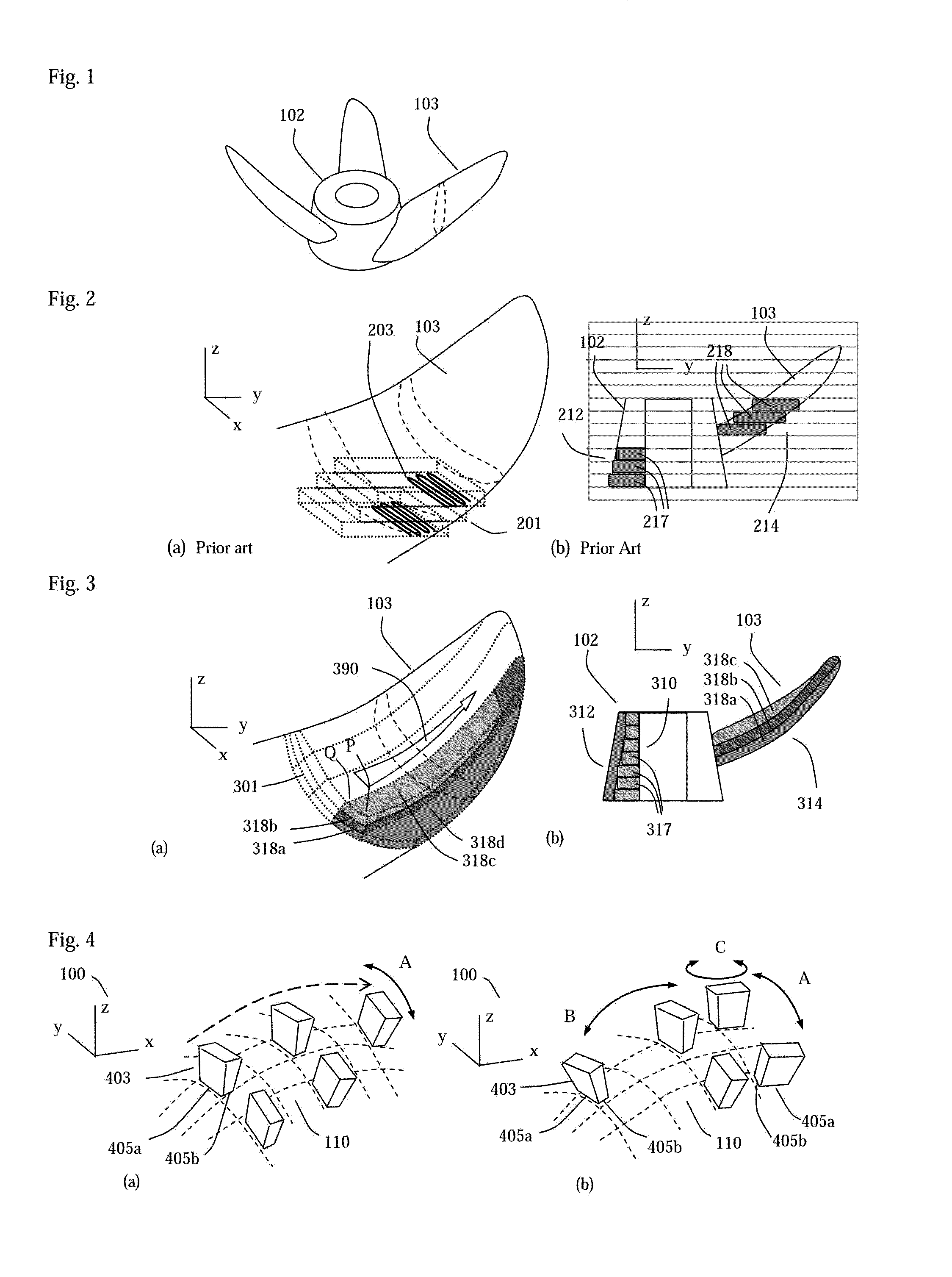Flexible 3D Freeform Techniques
a freeform, flexible technology, applied in the direction of additive mnaufacturing with solid and fluid, glass pressing apparatus, butter production, etc., can solve the problems of slow build-up rate, large post-machining cost, poor surface finish, etc., to improve the width of dispensing materials, improve surface finish, and increase manufacturing speed significantly
- Summary
- Abstract
- Description
- Claims
- Application Information
AI Technical Summary
Benefits of technology
Problems solved by technology
Method used
Image
Examples
example 1
Molten Metal as Solidifiable Material, 3D Freeform by a Casting Based Means
1.1 the Material Dispensing System
[0067]FIG. 7(a) illustrates an example embodiment of a material dispensing system for metal, which includes a material supply unit 402, a dispensing head 403 and an optional differential molding means 420. FIG. 7(b)-(c) illustrates its cross-sectional views from side. The material supply unit 402, which includes a heating means (such as induction heating or electric arc heating) and a material feeding means (a metal wire powder can be used), sends the material into the dispensing head 403. The dispensing head includes a material cell 404 with an exit 405 at the lower end. A heating means outside of the material cell keeps the metal in molten state 480. A material not reactive to the molten metal is preferred for making the material cell. For example, aluminum oxide, graphite or other high temperature ceramics can be used to contain molten steel. Ceramics can also be used for ...
example 2
Plastics (Polymer Material) as Solidifiable Material, 3D Freeform by an Extrusion-Based Means
2.1 the Material Dispensing System
[0094]The material dispensing system is similar to the system of FIG. 8. Metals, such as aluminum, copper or steel, can be used for the material supply unit 402 and the dispensing head 403. The heating means can heat up the metal and then the metal can heat up the plastic material. Inert gas protection is generally not needed.
2.2 Means for Changing the Width of Dispensed Materials
[0095]The means of changing the width of dispensed materials by using a dispensing head of adjustable exit size and the corresponding basic mechanisms, as depicted in FIGS. 11 and 12, also apply to plastic materials. However, due to differences in properties between plastics and metals, the internal shapes of the material supplying unit and the dispensing head are different.
[0096]In the case of metals, for example in FIG. 12(a), the flow speed of the molten metal 480 along the suppl...
example 3
Molten Metal as Solidifiable Material, 3D Freeform by a Casting-Based Means, with Auxiliary on-Spot Heating
[0103]If the temperature of the base material, which the solidifiable material to be dispensed onto, is too low or its heat sink is too large, the molten metal from the dispensing head may not be able to heat up the previously solidified material within a short time. In this case, the newly dispensed metal could solidify prematurely without good bonding to the base material. To resolve this issue, an auxiliary heating can be applied on spot, i.e. at the targeted dispensing location, to locally preheat the base material. The auxiliary heating source should be able to deliver concentrated heat in a relatively short time. Such a heating source can be constructed based on the principle of a few industrial fusion welding systems, such as gas tungsten-arc welding, plasma-arc welding, or laser welding. FIG. 22 depicts an example system of this invention with an auxiliary arc-based hea...
PUM
| Property | Measurement | Unit |
|---|---|---|
| Ra | aaaaa | aaaaa |
| Ra | aaaaa | aaaaa |
| relative movement | aaaaa | aaaaa |
Abstract
Description
Claims
Application Information
 Login to View More
Login to View More - R&D
- Intellectual Property
- Life Sciences
- Materials
- Tech Scout
- Unparalleled Data Quality
- Higher Quality Content
- 60% Fewer Hallucinations
Browse by: Latest US Patents, China's latest patents, Technical Efficacy Thesaurus, Application Domain, Technology Topic, Popular Technical Reports.
© 2025 PatSnap. All rights reserved.Legal|Privacy policy|Modern Slavery Act Transparency Statement|Sitemap|About US| Contact US: help@patsnap.com



